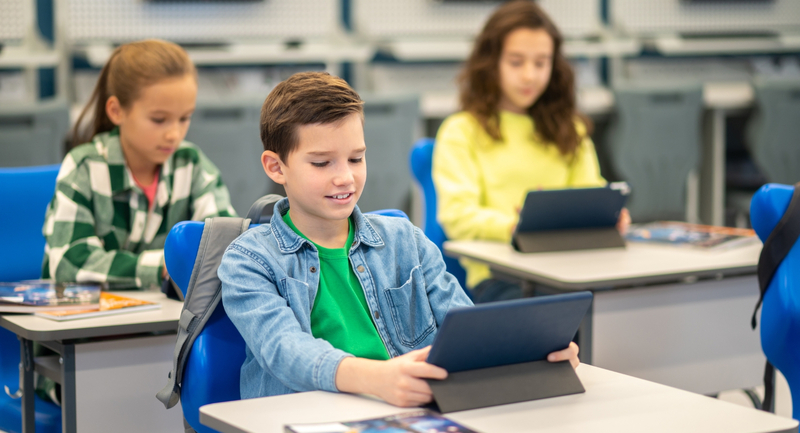Leveraging technology tools, cultivating a growth mindset, and embracing pandemic lessons.
The pandemic forced teachers everywhere to find creative ways to engage their students, whether in-person, virtual, or in a dual learner format.
As former teachers and current educators of teachers, we know the sudden shift in the spring of 2020 caused stress for administrators, teachers, families, and students.
The following strategies can be used to engage learners, whether they remain virtual, in-person, or in dual learner environments.
1. Embrace Flexibility and Adaptability
We suggest allowing for choice in assignments, choice in student use of edtech tools, and choice in student work partners (if appropriate). Any opportunity to relieve pressure and stress can make a big difference in how students and families adjust to a new or different mode of teaching and learning. For example, we use choice boards for students where they can choose how they demonstrate their learning. A Tic Tac Toe Choice Menu—which we created in Google docs for you to copy and modify to your content area and student needs—is a great way to allow for choice.
2. Cultivate a Growth Mindset
Cultivating a growth mindset for ourselves, and our students, can help to make the transition back to the classroom easier. As teachers, we will make mistakes and need to allow ourselves grace as we work to best support students. We suggest using self-reflection and goal-setting activities for yourself and your students. Learning what students believe and where they want to go will lead to greater engagement. Try creating a prompt on Flipgrid such as: “Tell us one thing you learned over the summer and one thing you are looking forward to learning about this school year.” Students can video record their responses as well as hear what their classmates learned about and want to learn about. They can then reflect on this same Flipgrid prompt later in the year.
3. Use EdTech Tools that Support All Modes of Learning
Just because the mode of learning may be different, we do not need to abandon the technology tools that have helped transform our practice during the past year. For example, we like Pear Deck and Nearpod as tools that can be used asynchronously and synchronously. Both tools are free and can integrate with Google Slides to add interactive questions, links to content, and activities that engage learners. If a student is not present during a synchronous lesson, these tools allow students to complete the same lesson independently.
4. Plan for Dual Audience Learning
Though not all students may return to in-person learning in the fall, all students still need comprehensive learning experiences. There are many tools that can assist us in preparing lessons for a variety of formats. VoiceThread is an excellent multimedia tool to use to not only flip a lecture to share asynchronously but also make it interactive. Learners can actively participate in a discussion, hear other students’ thoughts on a topic, or share their own thoughts. Teachers can create a slideshow by uploading images, documents, or audio, and users can comment and interact with the content using video, audio, or text.
5. Incorporate Daily Check-Ins
Since it is impossible to read minds, check-ins can help us stay in touch with the mental well-being of ourselves and others. Tools such as Jamboard or Padlet (where students respond to a prompt) can help facilitate quick check-ins. Jamboard supplies free templates to use in which learners can take a virtual sticky note, type their name on it, and drag and drop it into the column that represents how they are feeling (good, OK, bad). This allows educators to quickly take the temperature of the room—and of individual learners.
Resources to Help
As you prepare for the upcoming school year, remember that you are not alone. We recommend finding partners to share these ideas, test out new tools, and grow together professionally. The ASCD Community is a great place to start.
For more ideas on making a seamless transition to the fall, effectively navigating dual audience engagement, and engaging online learners, check out our Quick Reference Guide, Increasing Engagement in Online Learning, and our short book, Teaching the 4Cs with Technology.








